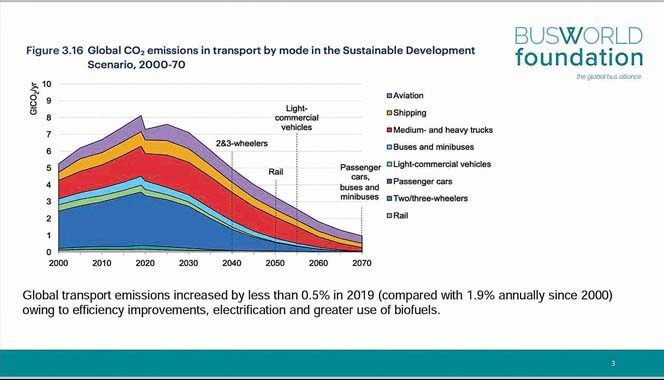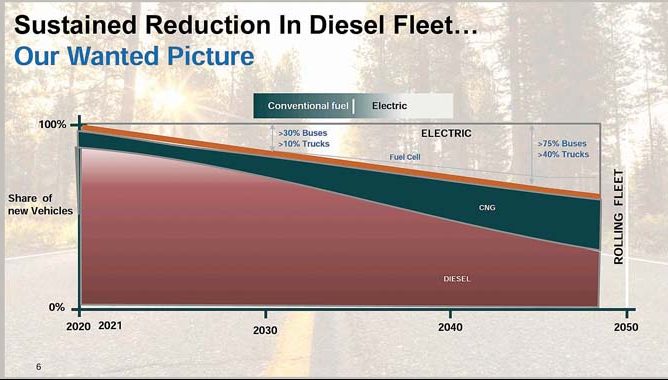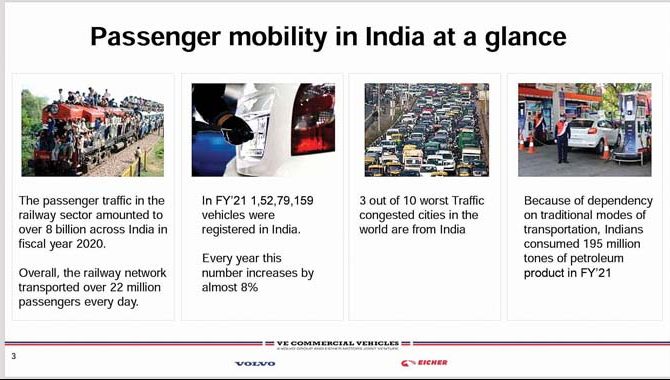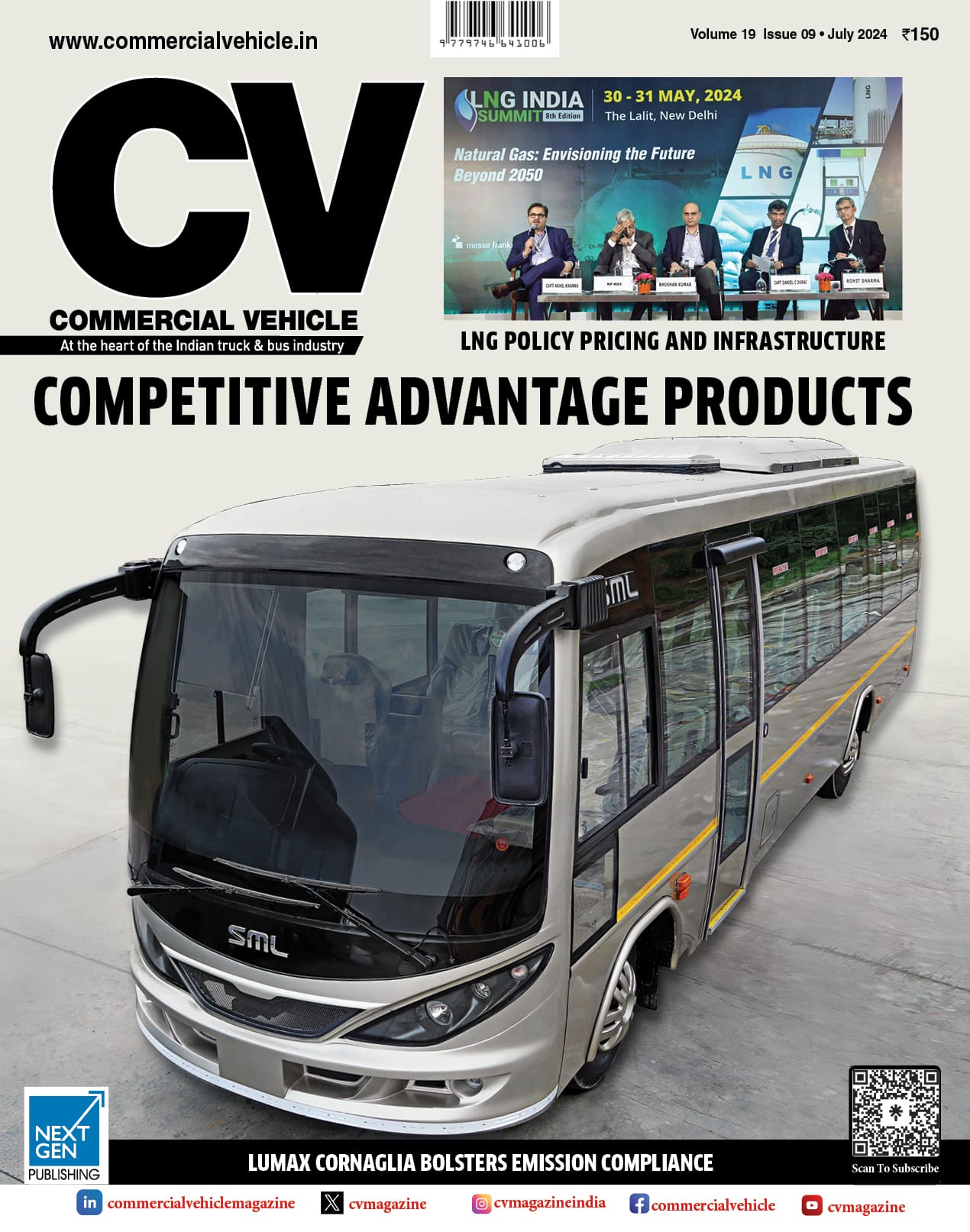A Busworld webinar on decarbonisation and digitalisation focused on the bus industry’s SDGs. Deepti Thore reiterates the focus on carbon neutrality and challenges en route.



Akash Passey, President Bus Division at VECV
Decarbonisation and digitalisation were recently identified as essential areas for driving the recovery of surface transport (by road) at a Busworld webinar. In the post-pandemic era, the industry is determined to realise its Sustainable Development Goals (SDGs) of which carbon neutrality is a crucial one. To address the challenges faced by the passenger mobility segment in attaining the goals, Akash Passey, President Bus Division at VE Commercial Vehicles mentioned that decarbonisation and digitalisation are interconnected. “Decarbonisation is the most effective and reliable road to the goals of carbon neutrality, climate neutrality, and a decarbonised global economy,” said Shivayogi C Kalasad, Managing Director, Kerala State Road Transport Corporation (KSRTC)


Decarbonisation and digitalisation were recently identified as essential areas for driving the recovery of surface transport (by road) at a Busworld webinar. In the post-pandemic era, the industry is determined to realise its Sustainable Development Goals (SDGs) of which carbon neutrality is a crucial one. To address the challenges faced by the passenger mobility segment in attaining the goals, Akash Passey, President Bus Division at VE Commercial Vehicles mentioned that decarbonisation and digitalisation are interconnected. “Decarbonisation is the most effective and reliable road to the goals of carbon neutrality, climate neutrality, and a decarbonised global economy,” said Shivayogi C Kalasad, Managing Director, Kerala State Road Transport Corporation (KSRTC).
Making a case for better air quality and its direct correlation to the quality of life, Kulwant Singh, Advisor – Busworld Foundation, public bus transport looked at India and South Asian cities. He hailed the reduction in greenhouse gas emissions with the use of fewer resources and lessening of CO2 emissions per passenger, by the bus industry, in comparison to individual motorised transport. He exclaimed that the industry would not rest on its laurels though. “Despite this great record of accomplishment, public transport companies are determined to contribute even further to transport decarbonisation by way of replacement of the oldest fleet with modern and highly efficient vehicles,” he said. Here, the role of alternative fuels and electric propulsion systems was deemed crucial.
The SDGs
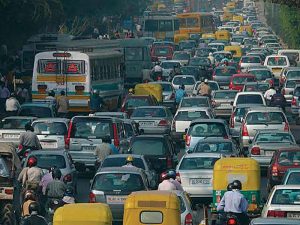 Shivayogi highlighted that out of the 17 SDGs seven were directly or indirectly related to the transport sector, both rural and urban. While some of these are linked with transport directly, many of these targets incorporate transport by recognising the importance of accessibility in achieving the advances in education, healthcare and other critical needs. To end hunger, to achieve food security, improved nutrition and promote sustainable agriculture transport assume importance. To make the cities and human settlements all-inclusive, safe, resilient and sustainable, and ensure urgent action to combat climate change and its impact, the role of the Paris Agreement in ensuring carbon neutrality by the year 2050 was highlighted at the lecture. Since the bus and coach building industry is highly fragmented, policy framework change and initiatives are required on integrating the SDG goals with the statutory bus body code parameters, according to Anil Kamat, Managing Director at MG Group. The bus and coach building industry is in a distressing crisis situation, and motivating them into following SDG goals will require incentivisation, he opined.
Shivayogi highlighted that out of the 17 SDGs seven were directly or indirectly related to the transport sector, both rural and urban. While some of these are linked with transport directly, many of these targets incorporate transport by recognising the importance of accessibility in achieving the advances in education, healthcare and other critical needs. To end hunger, to achieve food security, improved nutrition and promote sustainable agriculture transport assume importance. To make the cities and human settlements all-inclusive, safe, resilient and sustainable, and ensure urgent action to combat climate change and its impact, the role of the Paris Agreement in ensuring carbon neutrality by the year 2050 was highlighted at the lecture. Since the bus and coach building industry is highly fragmented, policy framework change and initiatives are required on integrating the SDG goals with the statutory bus body code parameters, according to Anil Kamat, Managing Director at MG Group. The bus and coach building industry is in a distressing crisis situation, and motivating them into following SDG goals will require incentivisation, he opined.
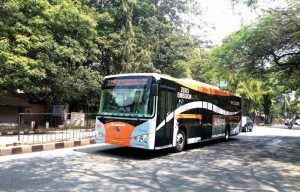 It is equally important that bus operators and customers have to be made aware of SDGs initiatives and also equally incentivised, he opined. Currently, customers are therefore forced to be more focused on capex centric purchase decisions rather than SDGs. Converging the bodybuilder fraternity and educating them on SDGs is vital in addition to making them inclusive members of the implementation value chain. Longer vehicle lifetime and lightweight exercises help customers reduce component weight and in turn lower raw material consumption. Lower greenhouse gas emissions over the full lifecycle of products, for example, by offering fuel economy through lightweight via advanced high strength steel and composites is an important approach, he pointed out. “MG group are of the profound view that there has to be a win-win for all the stakeholders, that is the customers, bodybuilders and OEMs and the government in the implementation of SDG,” Kamath concluded.
It is equally important that bus operators and customers have to be made aware of SDGs initiatives and also equally incentivised, he opined. Currently, customers are therefore forced to be more focused on capex centric purchase decisions rather than SDGs. Converging the bodybuilder fraternity and educating them on SDGs is vital in addition to making them inclusive members of the implementation value chain. Longer vehicle lifetime and lightweight exercises help customers reduce component weight and in turn lower raw material consumption. Lower greenhouse gas emissions over the full lifecycle of products, for example, by offering fuel economy through lightweight via advanced high strength steel and composites is an important approach, he pointed out. “MG group are of the profound view that there has to be a win-win for all the stakeholders, that is the customers, bodybuilders and OEMs and the government in the implementation of SDG,” Kamath concluded.
Attaining The SDGs
According to Jan Deman. Managing Director, Busworld Foundation, the transport industry based out of Belgium, Europe, as a whole is responsible for 20-24 per cent of all CO2 emissions alone. 85 per cent of all emissions coming from passenger transportation is attributed to individual cars and in comparison, the bus industry emits an estimated 1.25 per cent. “The need is to move towards low or zero carbon emissions by switching to battery electric, fuel cell, hydrogen-powered or hybrid drivetrains. The need is to collectivise the transport modes,” he asserted.
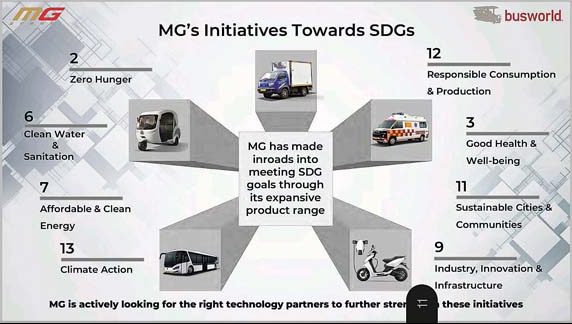 The number of vehicles which are registered out in India is enormous and most of them are two- or four-wheelers also known to play a part in road bottlenecks. According to Passey, three out of the 10 worst cities in the world on congestion today belong to India. Speaking about moving from individual transport to shared mobility, Passey opined, “Moving to alternative fuels, CNG primarily and electric in the city segment is important.” He explained, for long-distance, diesel will continue as the mainstay. However, for the city, decarbonisation will begin by transitioning to emobility. “As Indians, we play our part and as an OEM also, we play a small part in contributing to the environment by bringing inefficient decarbonised products and offering technological improvements. Passey added that the transition of diesel to BSVI compliance and the work in progress in India on EVs will be a boon going forward.
The number of vehicles which are registered out in India is enormous and most of them are two- or four-wheelers also known to play a part in road bottlenecks. According to Passey, three out of the 10 worst cities in the world on congestion today belong to India. Speaking about moving from individual transport to shared mobility, Passey opined, “Moving to alternative fuels, CNG primarily and electric in the city segment is important.” He explained, for long-distance, diesel will continue as the mainstay. However, for the city, decarbonisation will begin by transitioning to emobility. “As Indians, we play our part and as an OEM also, we play a small part in contributing to the environment by bringing inefficient decarbonised products and offering technological improvements. Passey added that the transition of diesel to BSVI compliance and the work in progress in India on EVs will be a boon going forward.
To attain SDGs, Kalasad stressed the need to incorporate alternative fuels and parallelly focus on the fleet transition to e-mobility. The need is for improved efficiency in the transport sector and to opt for a modal shift, he stated. Commenting on the upcoming transformational policies, he cited the need to look at urban planning as a holistic approach. A KSTRC case study was presented wherein BSVI vehicles were inducted into the fleet. As part of the induction process, the State Transport Undertaking (STU) organised routine tailpipe emissions tests besides mandating Pollution Under Control (PUC) certificates for the vehicles every six months. To be displayed on all buses, it must be supplemented with the provision of upgraded smoke density meters installed across depots. KSRTC is going beyond measures to improve upon fleet to also adopting an afforestation programme as a boost to the ecosystem.
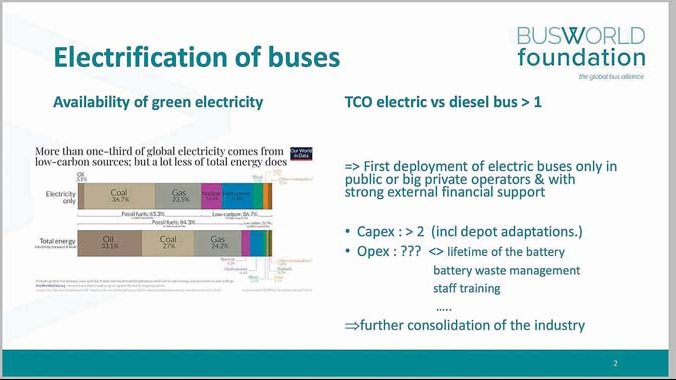 Speaking of decarbonisation from bus and coach builders perspective, Kamat, shared best practices and commented, “MG has been focused on lightweight elevating our products to meet decarbonisation goals. Finally, a design intent on lightweight and making the right choice of materials as well as selecting SDG focused supplier partners is paramount here.” An efficiently engineered and optimised body solution would help chassis manufacturers in meeting their goals as well, he advised.
Speaking of decarbonisation from bus and coach builders perspective, Kamat, shared best practices and commented, “MG has been focused on lightweight elevating our products to meet decarbonisation goals. Finally, a design intent on lightweight and making the right choice of materials as well as selecting SDG focused supplier partners is paramount here.” An efficiently engineered and optimised body solution would help chassis manufacturers in meeting their goals as well, he advised.
Adopting digitalisation
Digitalisation is the new normal, all agreed. According to Passey, key technologies and drivers of digitisation would be operations, maintenance, HR management and work organisation, and customer services. Stating that VE Commercial Vehicles (VECV) has majorly digitised its uptime centres, Passey pointed out that digitisation had helped the company not only operate but also manage the performance of its buses in any part of the world. “With the launch of BSVI, we were the first manufacturers to digitise heavily and offer Eicher live for our customers, our trucks and buses. This is helping customers for fleet management and to keep the uptime as high as possible,” he claimed. Passey also added that digital services have led to many partnerships and communications improving. The public transport game field has changed as the Original Equipment Manufacturers (OEMs) are pressing more on services a responsibility erstwhile resting with the operators.
 The public sectors are known to lag in incorporating digitalised initiatives, highlighted Kalasad. The need is to move away from the mindset of bureaucracy or “Sarkari” files and adopt digitalisation, he admitted. Some of the digitalisation initiatives carried out by KSRTC include online Inter-Corporation Transfer and Counselling Application, Electronic Ticketing Machines (ETM) with Dashboard, Contactless Counter m-Ticket at Kempegowda International Airport, in Bengaluru, Customer Relationship Management (CRM) system-office implementation of e-filing, Grievance Management Application, Women Safety Mobile Application with ITS, student bus pass application and an advanced reservation system. Shivayogi also stated that the STU is also looking at other opportunities which include the use of alternative fuels including ethanol blends and other bio-fuels to capitalise on Karnataka’s rich reserves. KSRTC buses will have a minimum of 10 buses running on ethanol in the near term. “Unless the government stipulates uniform digital adaptation it will not be feasible to satisfy the SDGs,” quipped Kamat.
The public sectors are known to lag in incorporating digitalised initiatives, highlighted Kalasad. The need is to move away from the mindset of bureaucracy or “Sarkari” files and adopt digitalisation, he admitted. Some of the digitalisation initiatives carried out by KSRTC include online Inter-Corporation Transfer and Counselling Application, Electronic Ticketing Machines (ETM) with Dashboard, Contactless Counter m-Ticket at Kempegowda International Airport, in Bengaluru, Customer Relationship Management (CRM) system-office implementation of e-filing, Grievance Management Application, Women Safety Mobile Application with ITS, student bus pass application and an advanced reservation system. Shivayogi also stated that the STU is also looking at other opportunities which include the use of alternative fuels including ethanol blends and other bio-fuels to capitalise on Karnataka’s rich reserves. KSRTC buses will have a minimum of 10 buses running on ethanol in the near term. “Unless the government stipulates uniform digital adaptation it will not be feasible to satisfy the SDGs,” quipped Kamat.
Policy intervention
Policy support initiatives at the national level need to be coherent and jointly aimed at supporting the decarbonisation of public transport. Policy coherence is also necessary to protect the investment of public transport authorities and operators’ investments into the infrastructural upgrade, procurement of vehicles and equipment that must be supported by way of stable conditions and clarity on the roadmap for fuel taxation and subsidies among other aspects. The digitalisation of public transport presents new opportunities for transport companies. These entail offering customers integrated digital services along the service chain and optimisation of transport operations.
There is an equal need to develop new solutions for the public transport of the future. These revolve around systems to facilitate electronic ticketing, navigation and guidance through the public transport system. During travel, for example, passengers must be seamlessly informed of any disruptions and or delays in the operator service with the help of embedded technology in vehicles or at bus terminals. Using transport network models to simulate traffic systems can help to optimise public transport and plan new dynamic and individualised mobility services.
The roadmap
Talking about transitioning to the electrification of buses and the availability of green electricity, Deman said, “If we look at the electricity production, globally, about 63 per cent of that electricity production is still carbon-based. We need to move to the production of green electricity, and then green mobility will be a consequence of that.” Another challenge faced by the industry is the Total Cost of Ownership (TCO) of an electric bus compared to a diesel bus on a much higher end. Also, the acquisition cost of an electric bus is high considering the installation of charging infrastructure and the grid capacity augmentation to meet the requirement. With the cost involved being high, operators are reluctant to switch to e-buses, it was said. As per the data from an international transport agency(not revealed), passenger transport will only meet the zero-emission target by 2070, which is not corresponding to the SDGs or the Paris agreement. “The need is to combine electrification of bus fleet with other measures including reducing carbon emissions coming from mobility including reducing the car miles by replacement with cleaner modes like walking or cycling. The collectivisation of transport will also help in reducing the carbon emissions in the industry,” he stressed. This can be prioritised with the help of digitalisation offering comfort and ease for public transport modes that are multi-modal. This involves making one ticket applicable for all modes including bus, train among others.
Pointing at the standardisation of key aggregates being one of the challenges when it comes to decarbonisation, Passey opined that partnering experts who can offer higher uptime to its consumers or operators will play an important role in driving the industry towards meeting its goals. He also gave the example of charging infrastructure for EVs where the partnership model is being looked at for OEMs. He drew attention to Fame I&II, Planned procurement under CESL, Production Linked Incentives (PLI) for battery production, vehicle scrappage policy and the increasing focus on clean energy generation as crucial drivers for the industry to attain SDGs.
Kalasad drew attention to the ‘Electric vehicle & Energy Storage Policy’ formulated by the State of Karnataka in 2017. As per the policy, there are special initiatives that are undertaken for EV manufacturing which includes EV manufacturing parks/zones, migrating to EV environment, facilitation of manufacture of EV, battery and charging equipment. The policy also focuses on support for charging infrastructure, support for Research & Development (R&D), support for incentives and skill development. Some of the incentives and concessions offered under the policy include investment promotion subsidy, exemption from stamp duty, concessional registration charges, reimbursement of land conversion fee, subsidy for setting up of effluent treatment plant and exemption from tax on electricity tariff.



